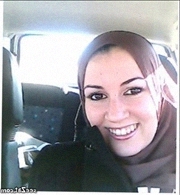Tutor HuntResources Child Development Resources
Children's Development Through Play
Date : 06/12/2012
Author Information

Uploaded by : Fatma Zohra
Uploaded on : 06/12/2012
Subject : Child Development
PHYSICAL DEVELOPMENT: Play can develop co-ordination and direction of your child`s bodily actions as there are chances to run, hop, skip and jump which develop muscle tone and balance. Throwing and catching assist to develop his gross and fine motor skills. Physical activities will also develop confidence in him.
EMOTIONAL DEVELOPMENT: Play is useful as an expression for your child`s feelings, both negative and positive... for instance... he may let extreme annoyance out on his toys appropriately than on other children or grown-ups, and during this will discover to direct anger helpfully. Being the same, he may indicate love and affection during pretend play. Calm activities can demonstrate an impressive outlet for your child who requires time and space to be lonely.
SOCIAL DEVELOPMENT: Your child will learn about for the first time to form relationships with others during play. His nursery or playgroup will assist to develop the skills needed for understanding both adults and children. He will learn about social skills such as taking turns and sharing and will become aware of others emotions and start to be able to take those emotions into account.
INTELLECTUAL (COGNITIVE) DEVELOPMENT: Through play, your child develops realization of general ideas. He`s able to investigate unusual materials such as dry and wet sand, attempting something unusual in different ways and finding the answer to something difficult to deal with. This explanation starts with your young baby playing with the toes and carries on as this develops a skill to grip objects and investigating with the mouth in a powerful manner. Quiet play helps to increase children's cognitive (thinking) skills by giving them the opportunity, space and time to learn about the world and reflect on their discoveries. Using the imagination in creative play develop their cognitive skills and they develop their social and emotional development if the play alongside other children Enhance children's physical development by giving the opportunity to use their muscles and develop gross motor skills and fine motor skills as well as general coordination and balance. Cooperative play always involves more than one person, so children must use social skills when playing cooperatively. Not only does this obviously enhance social development, but it allows children to develop cognitive and emotional skills as well. In learning new rules of cooperative play children must think about general societal expectations and fit them into their worldview, and they must also learn to keep their frustration at losing and joy at winning within reasonable levels thus enhancing their emotional development as well. Dramatic play is fun, but it`s also an important part of child development. There are four areas in which dramatic play enhances development: social/emotional, physical, cognitive, and language. Dramatic play enhances physical development and eye-hand coordination as children try out different roles. Both fine and gross motor skills are engaged as well as eye-hand coordination. Children use their cognitive skills in pretend play. They practice their language skills to explain and express what they are doing. When acting out stories and songs, literacy skills are enhanced.
Paper plate activity I choose this activity because it will help them to understand how to tell the time and learn it on the clock. Adam who is 7 years old doesn't know how to indicate the time when it quarter to and Rayan who is 4 doesn't know how to read time on the clock at all. This activity helps them to develop their intellectual skills and fine motor skills. Each one of them will make his clock and I will help when they will use the sesors because is not safe for 4 y-o. Supplies Sturdy paper plate paint Two-pronged metal fastener, Washable markers, Small piece of black poster board. Table to work Activity Detail We start writing the numbers 1 through 12 on the outer edge of a white paper plate and paint the middle of it the children they make their choice for the colors . Create hands for the clock by cutting off two half-inch wide strips of black poster board. Make one strip three inches tall and the other five inches tall. Cut off two small triangles from the black poster board. Glue one to the end of each of the strips of poster board. Line up the ends of the two strips of poster board that don`t have a triangle glued to them. Poke a closed paper fastener through the pieces of poster board. Then, poke a small hole in the center of the plate. Push the fastener through the hole and spread out the prongs on the back of the plate. Arrange the hands of the clock to the correct time and explain to your child that the shorter hand represents the hour and the longer hand represents the minute. We can use this tool to help them learn how to tell time or we can set the paper plate clock to an important time (like when a friend will be coming over to play) and then set it next to a real clock so that Rayan and Adam can begin to understand the passage of time.
This resource was uploaded by: Fatma Zohra
